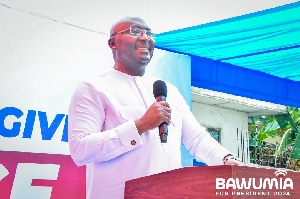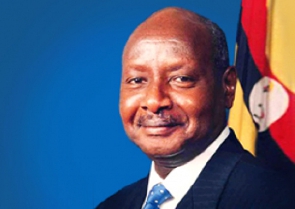Opinions of Monday, 11 December 2017
Columnist: Asaah Kofi
Sustaining the flagship free secondary education; The public health approach
Yes, it is a fact that most schools in Ghana especially the Senior High Schools (SHS) has been battling with the challenge of high enrolment, few infrastructure since independence even though free SHS only existed in the Northern part of the country and some selected districts. The introduction of FREE SHS for ALL FIRST YEAR STUDENTS IN THE COUNTRY however has worsen the situation, let’s accept the fact devoid of any permutations. THE OVERCROWDING IS MASSIVE NOW…..LETS DEAL WITH IT. This write up seeks to address the public health challenges associated with overcrowding especially in the SHSs in the country.
Overcrowding (congestion) occurs when a school facility enrolls more students than it was designed to accommodate. Overcrowding in public schools has been a challenge throughout the history of Ghana education as school have had to adjust to meet the needs of growing or shifting demographics. A 1963 Education Digest article, written when the peak of the Baby Boom generation was moving through elementary school, reported that there was a shortage of 121,200 classrooms in the United States with half of those needing to be replaced and the other half to be built to relieve overcrowding ("Classroom Shortage," 1963). The issue resurfaced in the late 1990s and has continued since then, as the school-age population has bubbled once again and high-growth areas of the country have struggled to meet the demands. The US situation is not different from the history of Ghana education.
Crowding, overcrowding & overenrolled: When does a crowded school become an overcrowded one? Is there a difference? Probably not. Many would argue that any number of students that exceed the planned capacity of a classroom or a school building impact the quality of instruction and learning because of the stresses that it places on access to teachers and services, not to mention additional wear and tear on the facilities. Overenrolled, synonymous with crowded and overcrowded, is the term used to define what occurs when the number of students enrolled in a school facility is larger than the number of students it is designed to accommodate, statistically defined as more than 5 percent of the capacity of a school building (National Center, 2000; 2007).
The public Health link;
Overcrowding are major factors in the transmission of diseases with epidemic potential such as acute Respiratory Infections, Meningitis, Typhus, Cholera, Scabies, etc. Outbreaks (incident of disease occurrence) of disease are more frequent and more severe when the population density is high. Recently there has been an emergence of communicable disease (person to person transmission) in our SHSs. Kumasi Academy recorded cases of Influenza type A (sub type H1N1) virus, a highly fatal, with short incubation period (0-2days) respiratory infection. Overcrowding is a contributing factor to the spread of this disease. The said disease has claimed the life of four (4) students already. Several reported cases were admitted and treated at KNUST hospital and KATH. Also, a student of Koforidua Secondary Technical School also died of meningitis (confirmed), also a communicable disease on the 8th of December, 2017.
More so, students of St. Martins Senior High School at Nsawam in the Eastern region have been hit with a strange disease (disease yet to be diagnosed) which has resulted in the collapse of more than 20 students on campus. It is prudent as a public health practitioner to anticipate the recent development as a tip of iceberg…. (Several cases might be silent or gone unnoticed).
THIS IS THE TIME TO ACT AND RESPOND!
PUBLIC HEALTH RESPONSE:
GES/School Authorities:
•Dialogue with the appropriate authorities (MOH/GHS/MMDAs) to activate or setup infirmary in the SH schools across the country. This is aimed at detecting early signs of diseases, prompt management as well as referral when necessary. The infirmary should be well resourced.
•Liaise with health authorities to ensure adherence to the NHIS Act. (Do not charge NHIS clients any amount for disease the scheme covers). Provision of free health care for SHS students should also be considered.
•Strategically decongest the dormitory, dining hall and classrooms and improve on ventilation (e.g. provide fans).
Ghana Health Service:
•Intensity surveillance activities in all facilities (private, public & CHAG) and in the various SHSs.
•Activate Public Health Emergency Management Committees (PHEMC) and review preparedness plans.
•Oriented tutors and students on meningitis and H1N1 focusing on key signs and symptoms and the need for early reporting to health facilities.
•Continuously and actively monitor all contacts of cases.
•Vaccinate all SHS students against the identified diseases (H1N1, Meningitis etc.)
•Ensure the availability of required health personnel as well as logistics to manage cases.
•Disseminate standard case definitions and protocols for use by health facilities.
•Follow up on and provide updated report (feedback) on all activities.
•Intensify public education especially on the signs of the identified diseases to ensure prompt referral of cases to health facilities for timely management.
GOG/MOH/MMDAs
•Provide the necessary resources to GHS to enable them work to combat the outbreaks or emerging diseases, i.e. vehicles, fuel, medical supplies, protective clothing etc.
•Support GES/school authorities to improve ventilation in schools, decongest the various schools.
•Activate/Set up and resource infirmaries in the SHS campuses.
•Institute alternate health financing mode for SHS students.
By: Asaah Kofi (0246632012)
Msc. Health Informatics
GHS-Atwima Mponua













